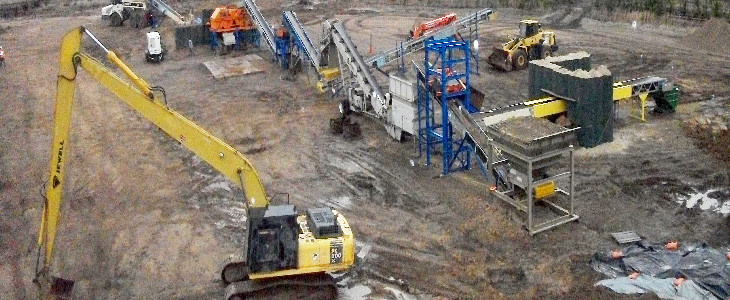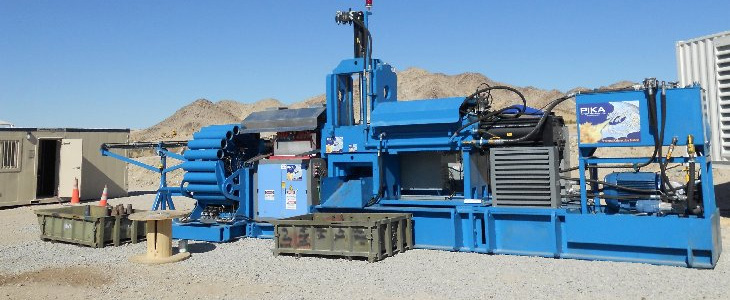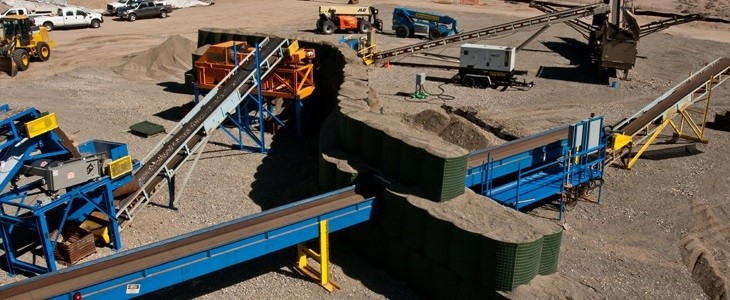We determined the safest method to excavate the explosives contaminated soils at the CHAAP DBG was to use a combination of hardened long-arm excavators and remote controlled earth moving machinery.
U.S. Army Corps of Engineers’ Omaha District (CENWO) owns and manages the Cornhusker Army Ammunition Plant (CHAAP) property, which included a 33-acre Demolition and Burning Ground (DBG) historically used for the burning, detonation, demolition, and disposal of explosives, process material, and ordnance. Some of the most dangerous hazards at the DBG were TNT and micro-gravel mines. Additional historical records indicated that a significant amount (an estimated 20,000 pounds) of explosives was unaccounted for and may have been buried at the site. CENWO needed to remove the hazards associated with the explosive contamination through performance of a munitions response action for military munitions (MM) and munitions debris (MD) at the DBG.
To achieve CENWO’s objectives, we were tasked to provide all labor, materials, and equipment to safely excavate, sort, and inspect the soils from the DBG in order to certify these soils as free of explosives hazards. We first prepared and received approval of an Explosives Safety Submission (ESS) through the Department of Defense Explosives Safety Board (DDESB) and CENWO approval on the Work Plans prior to beginning site activities. The work for this effort was conducted pursuant to the Comprehensive Environmental Response, Compensation and Liability Act (CERCLA), as amended by Superfund Amendments and Reauthorization Act (SARA) and National Oil and Hazardous Substance Contingency Plan (NCP) requirements, with regulatory coordination with Nebraska Department of Environmental Quality (NDEQ) and U.S. Environmental Protection Agency (USEPA) Region 7.
We determined, due to the potential of encountering the unaccounted for explosives, that the safest method to excavate is to use a combination of hardened long-arm excavators and remote controlled (R/C) earth moving machinery (EMM). Stationary pan, tilt, and zoom remote cameras were placed within the DBG operational area allowing our UXO Technicians and R/C EMM operator to constantly monitor operations from the R/C operating station. The video monitors were carefully watched for any sign of bulk explosives or MEC (e.g., gravel mines) that may be exposed during excavation.
Once excavated, the soils were transferred to a Sorting/Inspection Area (SIA) where they were transported on conveyors through a system of trommels and soil processors, and then visually inspected for MM/MD by our UXO technicians. As the final step in the process, the inspected soils were transferred to a stockpile for final confirmation sampling to detect the presence of any munitions constituents and lead.
During the course of our work, asbestos containing material (ACM) soils were discovered. We trained our on-site staff as ACM Workers/Supervisors to address the change in site conditions. This training included our UXO Technicians, equipment operators, truck drivers, and laborers. At the end of the project, we had excavated, inspected and certified approximately 92,800 cubic yards of soils as free of explosives. Of this total, we disposed of approximately 20,200 tons of explosives free ACM soils at an EPA approved landfill.
The ultimate outcome of implementing our process operations was a successful and safe mitigation and cleanup of a highly complex environmental concern with continuous communication throughout the process with and for our client.
For more information, please contact us.



